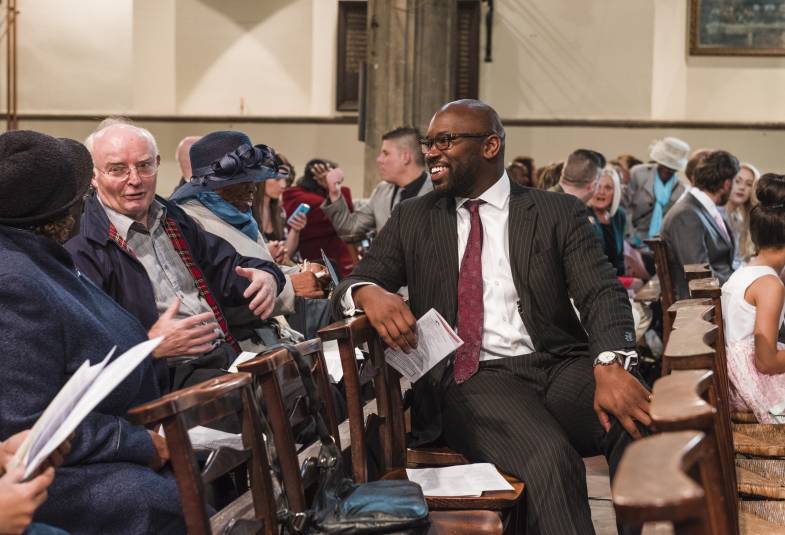08/02/2018

In the Nottinghamshire town of Retford, Anglican and Methodist congregations have shared church services and missionary projects for many years. The churches have even shared a Church of England vicar.
The Revd Mark Cantrill, who was ordained in 2003, was authorised to serve the Methodist church as a presbyter in 2007. This meant that as well as conducting Anglican services, he also served Retford’s Methodist community. When Mark spotted an ad asking for a team vicar/Methodist minister in the Retford area, he welcomed the chance to support two churches that are both important to him. Mark says: “I felt called to ministry to make a difference... People are people with the same needs both spiritually and pastorally. I discovered that although the [Anglican and Methodist] structures were different, the needs were the same.”
During his time as a minister for both churches, Mark conducted services and events, including baptisms, marriage preparation classes and Messy Church in the local Methodist building - Grove Street Church, a Grade II listed building in Retford’s centre. Committed to strengthening ties between the Anglican and Methodist congregations, Mark was also involved in leading joint services, which attracted as many as 150 people from both communities. Mark believes Retford’s Anglican-Methodist arrangement proved fruitful because “the best of both traditions” had been drawn upon.
Mark’s joint ministry was possible because Retford is part of a ‘Covenanted Partnership in Extended Area’ (CPEA) – one of the several types of ecumenical agreements that can exist between Church of England churches and other denominations involved in ecumenical initiatives. The collaboration enables new opportunities for churches within areas that have agreed to such a Partnership to share in worship and witness together, including ministers from one church regularly taking services in the others. Apart from Retford there are four CPEAs in the area around it, to say nothing of Bestwood Churches also in Nottinghamshire. There are CPEAs in Leeds, Sheffield, and the diocese of Carlisle is part of a CPEA covering the whole of Cumbria.
The sharing and the cooperation between Anglican and Methodist churches in which Mark was involved are especially significant, because the Methodist Church in Britain has been formally separated from the Church of England for around 200 years – although it emerged from it. But at February’s General Synod, discussions will take place on whether the two churches could enter into communion with one another. In practice, this step on the way to unity would allow Church of England and Methodist clergy to serve in each other’s churches while remaining part of their ‘home’ church. It would also involve the introduction of bishops within the Methodist church. The proposals are set out in the report – Mission and Ministry in Covenant – released by both Churches in June 2017.
Mark is passionate about ecumenism and says it is “not denomination, but Christianity” that he puts first. Far from robbing the Church of England of “its Anglican flavour” he believes the proposals will allow both Churches “to grow together”.
Mark’s joint ministry changed last summer, and he now looks after several Anglican churches. He is still authorised to serve in the Methodist church. However, under the plans detailed in Mission and Mission in Covenant, the kind of ministry he exercised in Retford would become easier for Parishes and Methodist Circuits to develop and be based on full recognition in both churches. Mark says he will always be an advocate for ecumenism; he sees it as essential to spreading the gospel: “The Christian community is divided on many issues… we need to promote a greater sense of unity within the diverse Christian expression in order to show that we are united and that we have a message for all on salvation”.